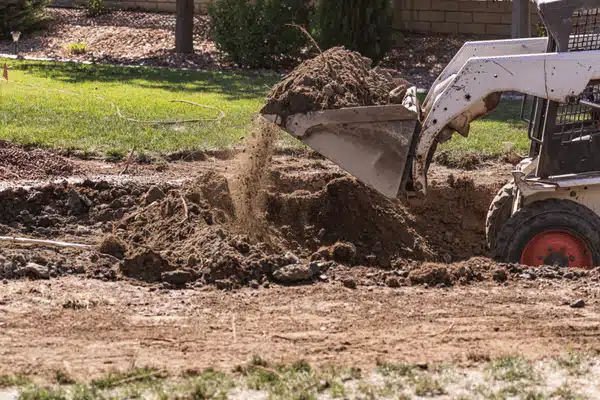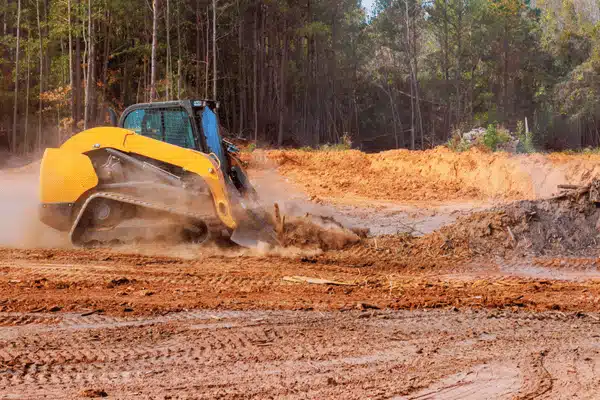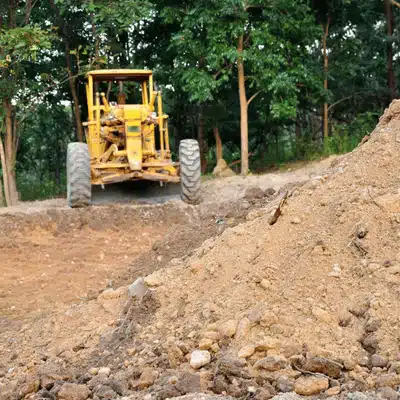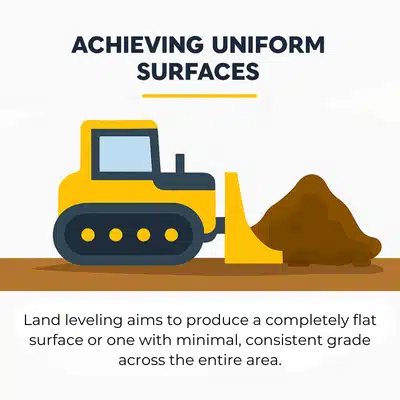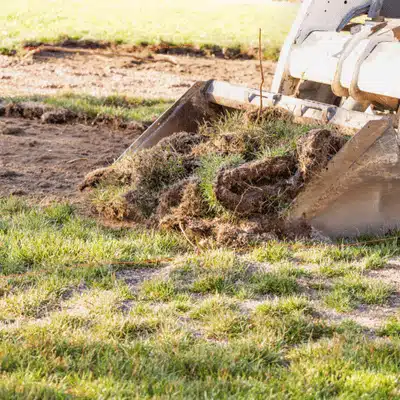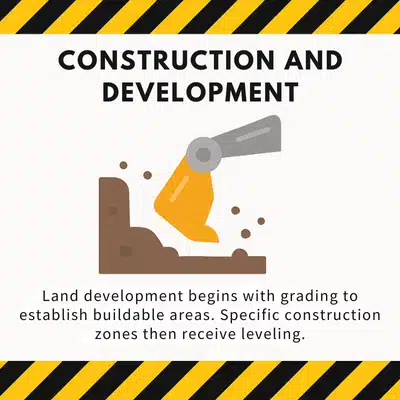Building any new structure begins with Site preparation, the groundwork that turns raw land into a stable, solid foundation.
What is site preparation in construction? It covers removing existing structures, site clearing and soil testing, then shaping proper drainage before construction begins. The site preparation process confirms your construction site meets soil requirements, environmental regulations and can carry a new building.
For any construction project in Robinson, TX, understanding site prep lets you make informed decisions, save time and avoid major problems that threaten your project. Skipping site prep can undermine a strong foundation and lead to costly repairs.
Why Site Preparation Matters
Site preparation sets the stage for everything that follows. Poor preparation can lead to ground settling, water damage, and structural failures. These future problems cost far more to fix than doing the job right from the start.
Proper preparation for construction sites remove other obstacles that could interfere with construction activities. This includes large rocks, tree stumps, and underground debris. The process also addresses drainage issues early, preventing water from pooling around your new structure.
Environmental protection is another key reason for thorough preparation. Modern construction site preparation includes erosion control measures like silt fences and retention ponds. These protect the surrounding environment and neighboring properties from construction runoff.
The Site Preparation Process: Key Steps
The preparation process follows a logical sequence. Each step builds on the previous one, creating a systematic approach to land development. Here’s what happens during typical construction site preparation:
Site Investigation and Surveying
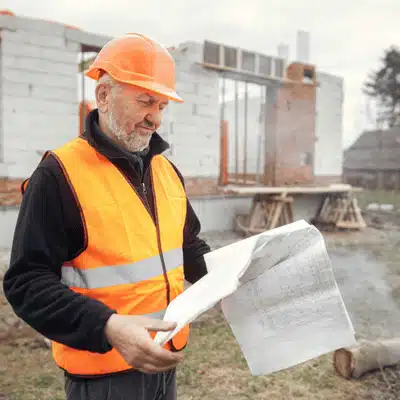
Site Investigation and Surveying marks the first step. Professional surveyors map property lines and document the land’s current conditions. Geotechnical engineers conduct soil testing to determine soil type and stability. This testing reveals whether you have clay, sand, or rock beneath the surface.
Site surveying also locates underground factors like gas lines and electrical wires. Hitting these during excavation creates dangerous situations and costly repairs. The investigation may uncover hazardous substances or contaminated soil that requires special handling.
Site Planning
Planning comes next after the first step. Engineers and architects draft plans showing where the building will sit on the site for construction, using construction site surveying to check type of soil. This stage sets access roads for construction vehicles, maps utilities, and defines job site logistics within the construction process. Planning is carefully planned, factoring in landscaping features and water runoff from start.
Permits and Approvals
Permits and approvals must be secured before heavy work begins. Most areas require building permits for new construction, and applications often ask about type of soil, access points, and potential hazards to confirm a proper site. Many also need specific permits for grading process work or demolition during the construction process, as well as separate demolition clearance. These permits ensure your project meets local codes and environmental regulations.
Site Clearing
Site clearing involves removing everything that shouldn’t be there. Crews use heavy equipment like bulldozers and excavators to clear trees, brush, and debris. Existing structures are demolished following safety protocols. All materials are hauled away to proper disposal sites.
Soil Preparation
Soil preparation includes excavation and grading. Workers dig to required depths for foundations and utilities. Grading levels the ground according to plan specifications. This step often involves “cut and fill”, removing soil from high spots and adding it to low areas.
Utility Installation
Utility installation happens before final grading. Underground utilities like water, sewer, and electrical lines are installed. This work is easier before the foundation is poured. Project managers coordinate with utility companies to ensure proper connections.
Final Grading and Compaction
Final grading and compaction is the final step that completes the site prep. The surface is fine-tuned to exact specifications using laser levels. Soil is then compacted using heavy rollers to remove air pockets. Proper compaction prevents settling after the building is complete.
Permits and Regulations

Construction site preparation requires various permits and approvals. These regulations protect public safety and the environment. Here’s what you need to know about permits:
Building Permits are required for most construction project work. These permits cover both construction site work and building construction. You’ll submit plans showing how you’ll prepare the site and what you’ll build.
Grading Permits are often needed for major earthwork. In Robinson, TX, significant grading sites require a permit from Building Inspection. This ensures construction activities meet local standards for safety and drainage.
Environmental Permits may be required for larger projects. Any work disturbing one acre or more needs a Texas stormwater permit. Projects near wetlands or streams need additional approvals.
Demolition Permits are required when removing existing structures. These permits ensure hazardous materials like asbestos are handled properly. Licensed contractors know these requirements and can handle permit applications.
Working with experienced contractors helps navigate the permit process. They understand local requirements and can prevent costly delays. Careful planning at this stage keeps your project on schedule.
Timeline Expectations
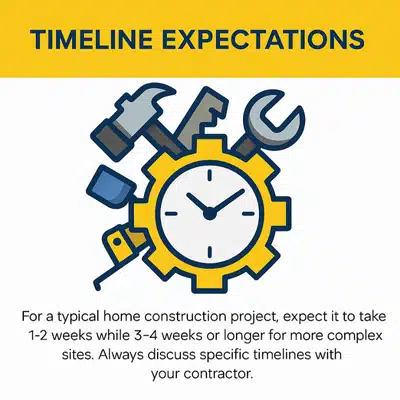
How long does site preparation take? The timeline vary depending on several factors:
Project Size affects duration significantly. A simple residential lot might need only a few days of prep work. Larger construction project sites could require several weeks or months.
Land Conditions impact timing. Clear, level lots prepare quickly. Heavily wooded areas or sites with existing structures take longer. Soil conditions also matter – rocky ground slows excavation work.
Weather Conditions can cause delays. Rain makes earthwork impossible and unsafe. Wet soil can’t be properly compacted. Texas weather can be unpredictable, so build weather contingency into your timeline.
Permit Processing sometimes takes longer than the actual work. Complex projects or busy permit offices can extend approval times. Starting the permit process early prevents construction delays.
Equipment Availability affects scheduling. Heavy machinery must be available when needed. Heavy equipment like excavators and graders are in high demand during busy construction seasons.
For a typical home construction project, expect site preparation to take 1-2 weeks on a simple lot. More complex sites might need 3-4 weeks or longer. Always discuss specific timelines with your contractor based on your site’s characteristics.
Cost Considerations
Site preparation cost hinges on several factors.
Land clearing varies by square foot and complexity, with basic lots running about $1,500 to $5,000 and dense woods costing more for specialized equipment.
Excavation and the grading process add roughly $1,200 to $4,000 and $950 to $2,500, especially when proper drainage requires extra shaping.
Soil testing and surveying offer priceless insurance; soil testing by geotechnical engineers and a survey together average $800 to $1,900 and avert major problems later.
Permit fees range from a few hundred dollars to more than $1,000.
Investing in thorough site preparation prevents support failure, drainage headaches, and other costly problems that can derail your project on schedule.
Safety and Environmental Considerations

Safety is paramount during site preparation. Workers must wear personal protective equipment including hard hats, steel-toed boots, and safety glasses. Construction site areas are fenced for security.
Environmental protection involves multiple measures. Silt fences prevent soil erosion into neighboring properties. Retention ponds manage stormwater runoff. These measures protect the immediate vicinity and comply with regulations.
Hazardous materials require special handling. Old fuel tanks, asbestos, or contaminated soil must be addressed by licensed professionals. Proper disposal protects both workers and the environment.
Getting Started Right
Site preparation is the foundation of every successful construction project. This work transforms raw land into a stable, buildable surface. The steps involved require heavy equipment, skilled operators, and careful planning.
For Robinson, TX homeowners, partnering with experienced local contractors ensures proper site prep. These professionals understand local soil conditions, permit requirements, and environmental concerns. They have the right equipment and expertise to handle multiple steps efficiently.
Don’t view site preparation as just another construction expense. It’s an investment in your project’s long-term success. Proper preparation prevents future problems and creates a solid ground for everything that follows.
Ready to start your building project? Contact experienced excavation professionals who understand the site preparation process. They’ll assess your specific site, handle permits, and ensure your land is properly prepared for construction. With professional site preparation, your project starts on solid ground.
